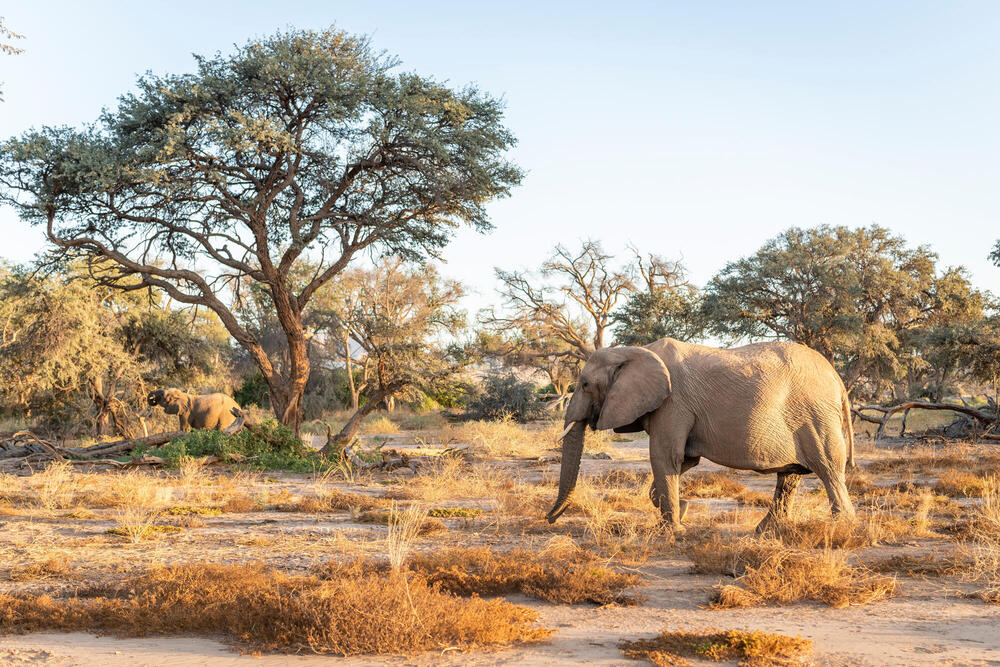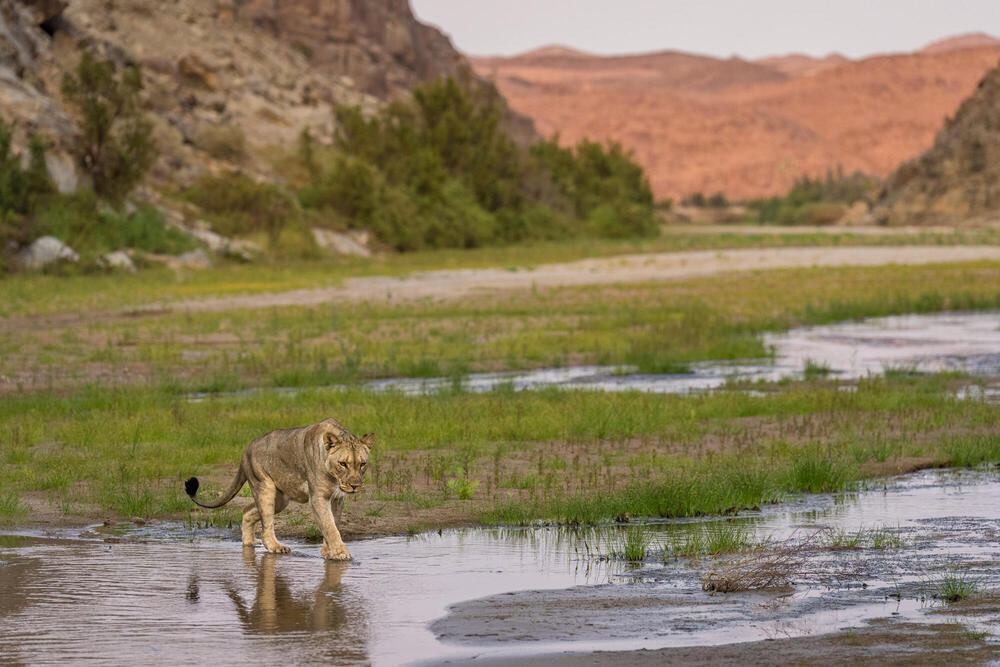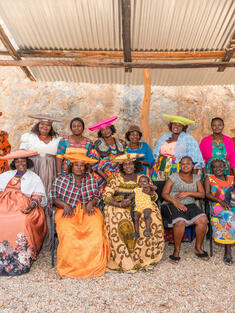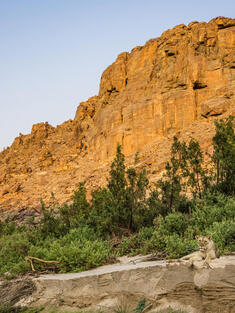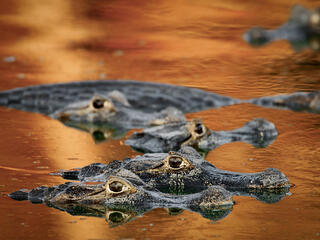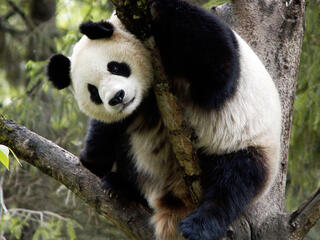The trust is one of the oldest black rhino conservation groups and the only one with an agreement with the government to monitor the population and conduct research on black rhinos in the remote Kunene Region. The group pioneered the strategy of putting the well-being of black rhinos in the hands of communities that live with them, and it’s paid off. In the area where the trust operates, black rhino numbers have increased threefold over three decades. The rhino’s range has also expanded, and people will pay to see them. “Now that [people] get benefits directly from the rhinos, they are proud to have them here and to protect them,” says Uri-Khob.
For some, protecting rhinos has become central to both life and livelihood. The men and women employed as rangers in the region are masters at tracking the animals in their arid, hardscrabble home. It’s boot-stripping, tire-tearing terrain, but rangers move across the landscape with apparent ease, fluent in the language of the rhino—an overturned rock here, some rhino- or oryx-browsed euphorbia there.
Sebulon Hoëb began working for Save the Rhino Trust 33 years ago, and his son, Hofney Gaseb, has followed his lead. “I could track a rhino before I could read,” says Gaseb, recalling his days as a young child in the field with his father and brother. While on patrol for up to 21 days at a time, rangers photograph each rhino they see, feeding a database that informs management decisions. Committed rangers are recognized at annual award ceremonies, can earn performance-related cash bonuses, and vie for the coveted title of “Rhino Hero,” which comes with a bomber jacket for colder months.
In fact, there’s a whole culture developing around black rhino conservation through initiatives like an annual rhino pride march, a rhino conservation-branded soccer league, and early literacy projects that elevate the animals in the eyes of rural Namibians.
“We feel like the rhinos are our children,” says Hoëb, proud of how his work has supported his family and community and cemented deep ties to the wild land he loves. Equally important? Rhinos draw tourists; their presence creates jobs and generates income. Hoëb’s other son, Rodney, is a rhino guide.
“If you don’t have communities on your side in conservation, there is no hope for you,” says Save the Rhino Trust’s Uri-Khob. “We know the people we employ, and the traditional authorities know them. The communities know them. It’s kids growing up in the communities who keep these rhinos alive.”
Just two years ago, he says, a poaching syndicate from up north came into one of the patrolled areas.
“Before they came in, the communities already knew about them,” says Uri-Khob. “The poachers were arrested before they could do any harm.”
